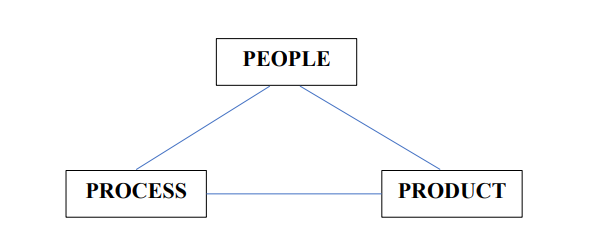This very brief informal article aims to introduce a fundamental model of leadership that can be adopted across Army, as well as introducing a simple tool to assist leaders at all levels understand themselves and others.
Introduction
The concept of leadership is as fundamental to Army as the concept of soldiering – they are necessarily entwined, in that we cannot be effective soldiers without some kind of effective leadership, and, likewise, one would struggle to be an effective leader without anyone to lead.
Army has managed to distil the concept of soldiering down to a simple and pure model that is etched into the mind of every member of Army – one that sits in the back of our brains, and can be recalled instinctively when needed.
Army calls this The Basic Drill. Run-down-crawl-observe-aim-fire. Followed closely by the mantra of 'I’m up – they see me – I’m down'. Everything else follows on from this basic drill – target indications, fire control orders, marksmanship principles – and as we add more knowledge and information onto our foundation this develops into tactics, techniques, and procedures, before evolving into doctrine. We build training establishments and schoolhouses to refine and teach all of the amplifying and supporting knowledge, theories and principles; however, it all comes back to that basic drill.
It is perhaps surprising to note then, that Army has no such basic drill for leadership. We have a definition of leadership. We have the 10 principles of leadership. We have doctrine, the concept of mission command, various models, training establishments, PME – a whole plethora of teaching and resources but nowhere do we have that fundamental, instinctive drill that can be applied immediately to give us that initial set of actions to regain the initiative and keep momentum.
The PPP Model – People, Process, Product
Anyone who has completed any kind of outdoor education as part of their schooling prior to Army may be familiar with this model, as it is taught by a number of institutions, including Outward Bound Australia.
The model is simple, and scalable – suitable for a junior soldier or officer undertaking a leadership task for the first time, all the way to a JTF Commander leading and managing complex teams and structures.
The premise of the model is simple – there are three main things that a leader must contend with in order to successfully achieve a task – being the people, the process, and the product. Ideally, these are balanced equally, as depicted by the triangular diagram below; however, there are circumstances where achieving this balance is not possible, and weighting one aspect of the triangle more heavily will detract from the other aspects.

This is a very simple approach – almost like a filter – that can be instinctively applied to any task or problem, by any leader, at any level.
Placing too much emphasis on the product – or the mission – may neglect the process and the people (the classic 'I don’t care how – just make it happen' approach). Whilst there are certainly circumstances where this is appropriate or necessary, any leader who is aware of the PPP model will now be conscious that they are perhaps neglecting the people and the process part of the triangle.
Similarly, overlooking the process side of the triangle in order to look after the people and produce a good product runs the risk of achieving the goal or the mission, but potentially carrying it out in an unethical or otherwise illegal manner – or, more likely, in a manner that circumvents established doctrine and protocols. An example of this may be a leader who instructs their people to take a certain route on a heavy vehicle driving task, as it is shorter, more comfortable, and still reaches the destination. Although they have looked after their people and achieved the product, by neglecting the process they have not gone through the checks and balances required and have thus potentially caused over-mass and over-dimension vehicles to be driven on non-approved routes.
Too much attention or consideration to the people side of the equation may make a leader extremely popular with their subordinates, at the expense of correctly established procedure and successful task completion or mission outcome.
Conclusion
Certainly, readers will be able to identify – either in themselves, or in others – leaders who will naturally bias one side of the equation over the other. Introducing this model into the fundamentals of teaching Army leadership would give all leaders at all levels an awareness of the three sides to the equation. The PPP model will assist leaders at all levels in identifying their natural bias and what they may need to concentrate on – and therefore what they may be required to neglect – in order to carry out their task.
Although this is a very simple model, and a very simple drill, it can be applied to any task, at any level, by any person - regardless of complexity, and should provide that initial, instinctive foundation upon which good leadership is built and maintained. The People, Product, Process model should be the keystone – and Basic Drill - of Army’s approach to leadership.
Note
This is a very brief scratch on the surface of a topic which the author has spent a long career in prior to joining Army as a late bloomer – if anyone, regardless of rank, is interested in the concept or would like some more resources or even just a chat, feel free to contact me, and I will endeavour to help out where I can.









